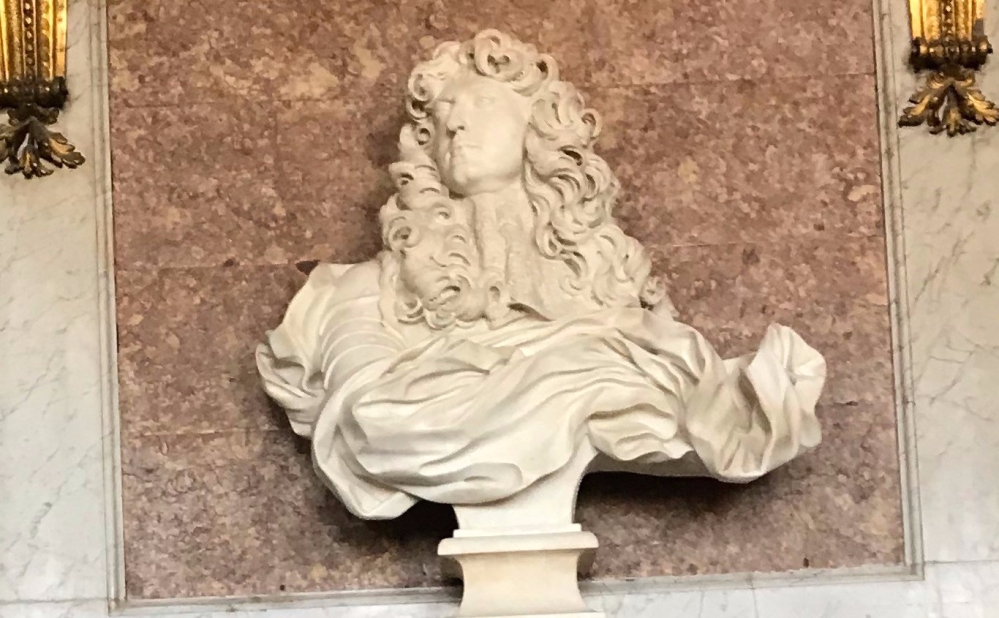As stated in the first part of my post about Versailles, the Palace and Park of Versailles (Versailles) today may be visited by tourists, art and history enthusiasts. Located south-west of Paris, trains take tourists and visitors to Versailles for around 45 minutes. A complex of more than 800 hectares, Versailles is the third most visited French tourist destination with over 6 million visitors annually. It has four major divisions: the Estate of the King (Main Palace Hall), the Gardens, the Estate of Trianon, and the Royal Stables.


Tourists may enter the gardens and the parks for free. The Grand Palace and the Trianon Palace are ticketed. I purchased a passport pass for 20 Euros, which, in my view, was a good deal. Purchasing a single ticket to enter the palace was 18 Euros. Please note, ticket prices may vary, depending on the season. It was a week-day when I visited the palace. This means, no fountain show. To enjoy the fountain, the staff at the ticket counter said, I should visit Versailles on a weekend.

According to the curatorial notes of The Palace, the building has 2,300 rooms spread over 63,154 sq. mi. The palace is home to different halls mostly dedicated to Greek and Roman gods and goddesses such as Apollo, Hercules, Venus, Mercury, Mars and Diana. Each hall (called salon) is ornately decorated with paintings, sculptures, bas relief and other decors such as curtains, carpets, mosaics, etc.

Some significant artworks (personal choice): Meal at the House of Simon the Pharisee by Paolo Veronese located at the Hall of Hercules, which was used during Louis XIV’s reign as the palace’s chapel. René-Antoine Houasse’s Abundance and Liberality, located on the ceiling of the Salon of Abundance depicts a megalomaniac representation of Louis XIV’s view of France’s power in the European continent. The ceiling paintings by Jean Baptiste de Champaigne depicts Mercury in his chariot, drawn by a rooster, and Alexander the Great and Ptolemy surrounded by philosophers found at the Salon of Mercury. The celebrated bust of Louis XIV by Bernini is on display at the Salon of Diana, where Louis XIV used to play billiards.


The Hall of Mirrors is perhaps the most famous room in the Versailles. The hall is more than 70 metres (230 ft) long, and it is lined with 17 wide arcaded mirrors, designed to match and reflect the windows opposite facing the gardens. The hall was originally furnished with silver furniture by Le Brun. However, these furnishings were melted down in the late 17th century to help pay for war expenses.
The Hall of Mirror was used for large events, such as full-dress and masked balls. When I was walking through the shimmering hall, Andrew Lloyd Webber’s music was playing on and on and on, inviting me to believe that visitors were there to participate in a “masquerade” ball and that the phantom of the opera would appear any moment and would create a scene.

Anyhow, right after the Hall of Mirror was the King’s Apartment, where Louis XIV’s bed is well preserved. Notable also in this hall is a carved relief France Watching Over the Sleeping King (by Nicolas Coustou).
Soon, my visit to the palace led me to the gardens. Relatively, blooms were still present when I visited but according to my companion, if only I were two months earlier (it was September when I visited Versailles), the garden complex was in full bloom. Nonetheless, it was still luscious and vibrant.


Then a long walk from the grand palace is the small palace called the Grand Trianon. According to the brochure, the design of the Trianon is heavily influenced by Italian architecture. The small palace is a single storey complex surrounded by an equally marvellous courtyard on one side and luscious gardens on the other.

The Grand Trianon was originally a family retreat palace for Louis XIV. Later, Marie Antoinette preferred to stay in this palace, away from the politics (as my companion mentioned) of the Grand Palace.
Versailles received the UNESCO World Heritage Status in 1979.
After six hours strolling in the Versailles, I realized I needed more time to really consume and digest the magnanimity of the complex. It was my first time in Paris or in France generally. I will definitely find another time in the future to go back to France and discover more of its heritage. I will definitely find another time in the future to discover more of Versailles.
